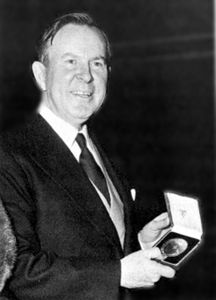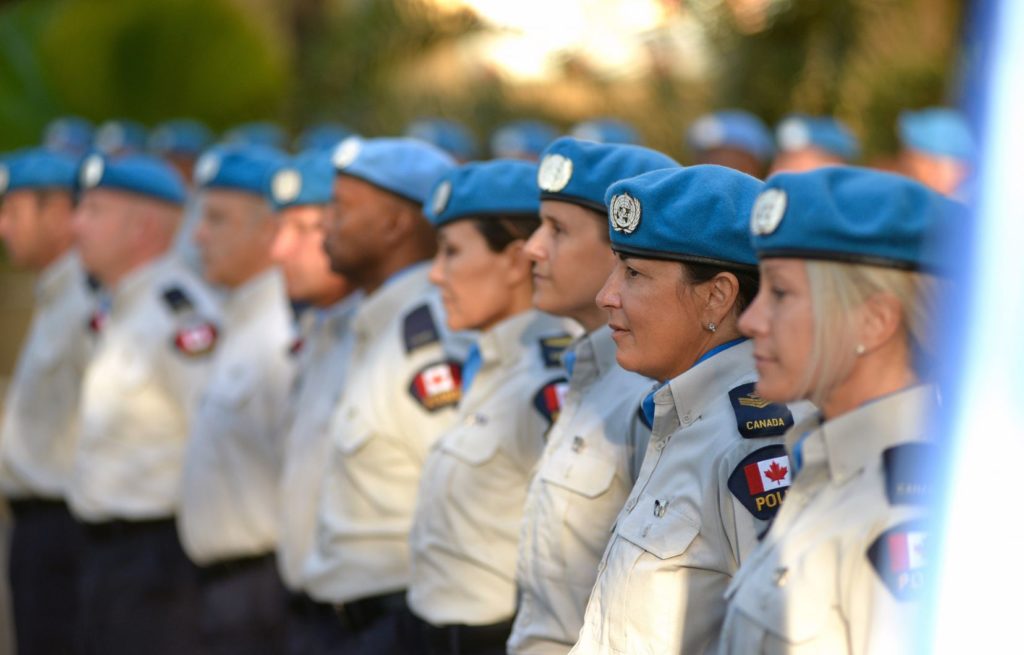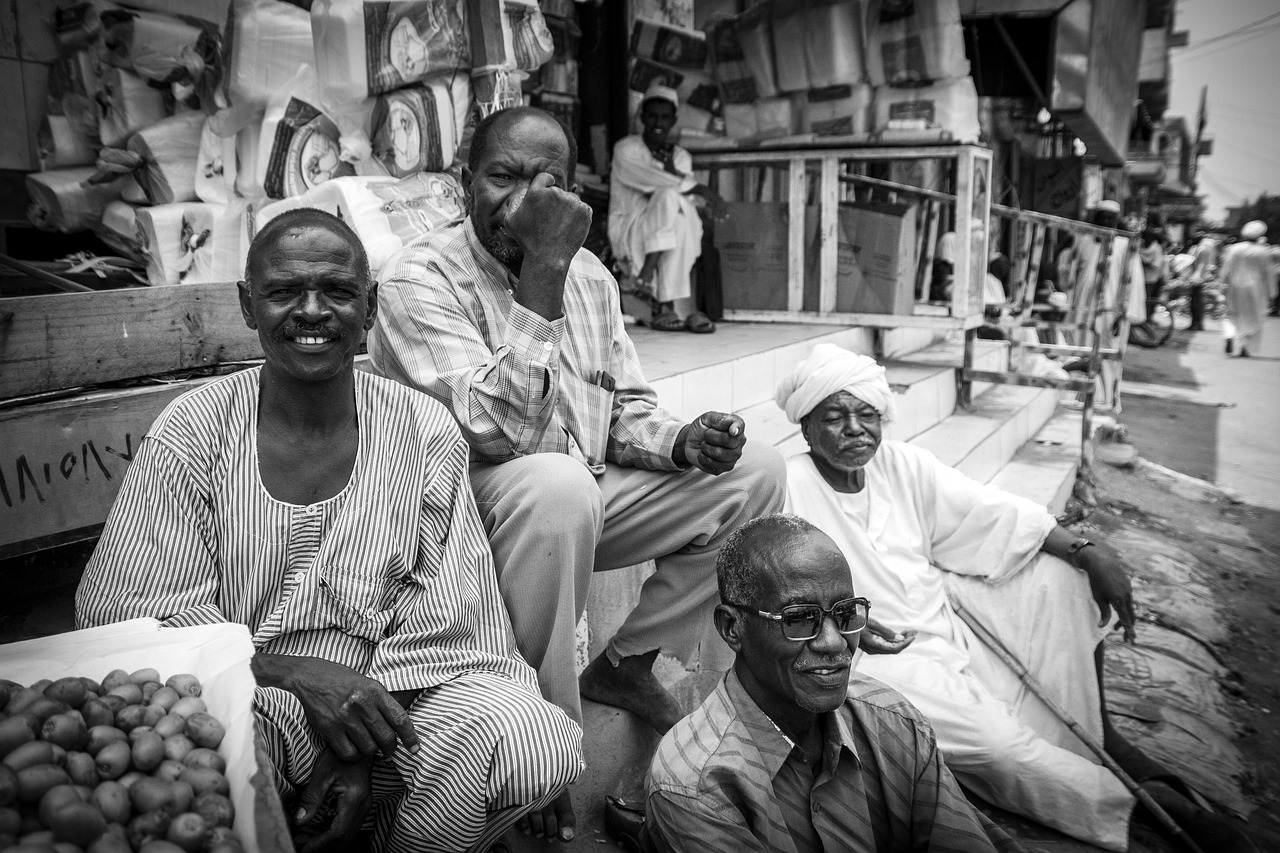Peacekeeping is a concept enshrined in the United Nations Charter with the aim of ensuring peace, security, and the protection of civilians. This concept evolved thanks to former Canadian Prime Minister Lester B. Pearson (1963-1968), who gave new impetus to peacekeeping with the creation of the Blue Helmets.
In 1956, Egypt nationalized the Suez Canal, sparking a crisis with Israel, France, and the United Kingdom, which formed an alliance. This conflict, which occurred in the midst of the Cold War, only increased tensions, and Canada played an important role in mediating the conflict [1]. More specifically, Lester B. Pearson, then Secretary of State for External Affairs, who led the Canadian delegation to the UN, began by seeking a diplomatic solution before changing plans and setting up an armed military force to maintain peace: this was the birth of the Blue Helmets [2]. This new army of peacekeepers allowed the alliance to withdraw and avoid taking up arms. This new contribution helped solidify the concept of peacekeeping, which had already been adopted by the United Nations in 1948.
Two years later, in 1958, he received the Nobel Peace Prize for his commitment.

©The Canadian Encyclopedia
“I know that I share this award with my colleagues and friends who have worked with me to restore peace and understanding between nations. I am happy to have had the opportunity to participate in this effort as a representative of my country, Canada, whose people have shown their dedication to peace.” [3]
Lloyd Axworthy, Minister of Foreign Affairs (1996-2000) under the Jean Chrétien government, continued this momentum by developing the concepts of human security, international law, human rights, and diplomacy. These values also form the basis of peacekeeping missions. As a result of his actions, he received the Nobel Peace Prize for his contribution to the ratification of the Ottawa Convention in 1997, now known as the Ottawa Process, which prohibits the production, use, stockpiling, and transfer of anti-personnel mines. A great advocate for women and children in conflict zones and a defender of human rights, he is recognized by the United Nations. His status thus reinforced Canada’s leadership role in the founding treaty of the International Criminal Court. His work earned him another award: the North-South Institute Peace Prize. He became chairman of the board of directors of the International Commission on Intervention and State Sovereignty (ICISS) [4].
In this context, Canada’s leadership in peacekeeping is reflected in the various missions in which the country participates, with more than 125,000 Canadians and a total of 130 combat deaths [5]. Between 1948 and 1988, 80,000 Canadian volunteers represented 10% of the military personnel sent by the UN.
Here are a few examples of Canada’s involvement:
In Cyprus in 1964, the Secretary of State for Foreign Affairs helped establish the UN force (UNFICYP). The Royal Canadian Air Force sent troops (550 to 1,100 peacekeepers per contingent) and equipment to the area. Canadian peacekeepers were involved in a local ceasefire near the strategic location of Nicosia airport and successfully kept the Turkish armies at bay. Twenty-eight Canadian peacekeepers lost their lives during the Cypriot conflicts, and most returned in 1993 [6].
In Rwanda, on 22 June, the UN decided to launch an observation mission as a first step. Canadian Major-General Roméo Dallaire was the chief observer, a mission that the Canadian Armed Forces named Operation LANCE. In October 1993, the mission became a peacekeeping mission, MINUAR, with General Dallaire as commander. After the genocide in May 1994, MINUAR became MINUAR II, with a mission to put an end to the massacres. A first Canadian operational contingent (FAC) arrived in Rwanda for this mission. Major-General Dallaire was in charge of the 5,500 multinational troops. The Canadians were primarily tasked with establishing a communication system in the country and later providing logistical support while helping the local population and children. Canadian soldiers also helped set up orphanages and a hospital. Operation PASSAGE, which aimed to provide necessary medical services to people returning to Rwanda, was a Canadian initiative. Peacekeepers raised awareness among the local population about dangerous weapons (mines and bombs) that are still present throughout the country. More than 600 Canadian military personnel participated in these operations [7].
In the Balkans, in order to restore order and security, nearly 40,000 Canadians were sent to the region, 23 of whom gave their lives [8]. The Canadian Armed Forces (CAF) and civilian police forces, including the Royal Canadian Mounted Police (RCMP), made a significant contribution in the former Yugoslavia, particularly in Croatia, Bosnia and Herzegovina, Macedonia and Kosovo. For a mission in Macedonia (1999-2000), Canada had a larger material (naval and air) and human presence. Up to 1,500 Canadians were part of NATO troops to ensure peacekeeping. They ensured compliance with ceasefire lines, provided food and relief, and protected ethnic minorities. They left the region in 2004 [9].
In Eritrea and Ethiopia (2000-2003), 450 CAF members joined international peacekeeping efforts in the region and were the first to be fully operational. They helped monitor and confront opposing forces. They monitored the security zone to ensure compliance with the peace treaty. No soldiers lost their lives [10].
More recently, Canadian peacekeepers have been taking part in the UN MINUSMA mission in Mali. In 2018, 250 military personnel were deployed, along with medical specialists to assist the wounded. This is Canada’s first major UN mission since Bosnia. Their material contribution, including helicopters, has been very useful in carrying out the mission [11].
Ultimately, despite a decline in the number of Canadian peacekeepers abroad, they have contributed to peacekeeping for many years and are considered pioneers thanks to Pearson’s creation of peacekeepers. Canadian peacekeepers are still active internationally, with 95 soldiers currently engaged in peacekeeping operations (PKOs) and 34 in UN missions [12]. However, their commitment to peace has not been limited to PKOs. Indeed, it can be seen under Prime Minister Brian Mulroney with the management of the apartheid crisis and under Pierre Elliott Trudeau with his peace initiative between Eastern and Western leaders to negotiate a reduction in nuclear weapons in order to ease Cold War tensions. This earned him the Albert Einstein Peace Prize [13].

©Guillaume Bourgault-Côté Le Devoir
Bibliography:
“Autres efforts de l’ère moderne”, Anciens combattants Canada, [en ligne], https://www.veterans.gc.ca/fra/remembrance/history/canadian-armed-forces/ Consulté le 25 janvier 2021.
Cavell, Janice, “Suez and After: Canada and British Policy in the Middle East, 1956–1960”, Journal of the Canadian Historical Association, [en ligne], https://www.erudit.org/en/journals/jcha/2007-v18-n1-jcha2287/018258ar/. Consulté le 23 janvier 2021.
“Chypre phase 2”, Anciens combattants Canada, [en ligne], https://www.veterans.gc.ca/fra/remembrance/battles-and-stages/cyprus-stage-2 Consulté le 25 janvier 2021.
Jasmin H. Cheung-Gertler, Axworthy Norman, The Canadian encyclopedia, [en ligne], Lloyd, https://www.thecanadianencyclopedia.ca/fr/article/axworthy-norman-lloyd-1. Consulté le 25 janvier 2021.
Jean-François Bélanger, “Mali : le retour des Casques bleus canadiens”, Radio-Canada, [en ligne],https://ici.radio-canada.ca/nouvelle/1124832/casques-bleus-canadiens-mali-onu-helicoptere-militaire-minusma. Consulté le 25 janvier 2021.
John Boileau, “Casques bleus canadiens dans les balkans”, The Canadian encyclopedia, [en ligne], https://www.thecanadianencyclopedia.ca/fr/article/casque-bleus-canadiens-dans-les-balkans. Consulté le 25 janvier 2021.
Jon Tattrie, “Crise de Suez”, The Canadian encyclopedia, [en ligne], https://www.thecanadianencyclopedia.ca/fr/article/crise-de-suez#. Consulté le 25 janvier 2021.
J.l. Granatstein, “Le Canada et le maintien de la paix”, The Canadian encyclopedia, [en ligne], https://www.thecanadianencyclopedia.ca/fr/article/maintien-de-la-paix. Consulté le 25 janvier 2021.
“Les Forces armées canadiennes dans les Balkans”, Anciens combattants Canada, [en ligne], https://www.veterans.gc.ca/fra/remembrance/history/canadian-armed-forces/balkans/information-sheet-balkans. Consulté le 25 janvier 2021.
“Les Forces armées canadiennes en Éthiopie et en Érythrée”, Anciens combattants Canada, [en ligne], https://www.veterans.gc.ca/fra/remembrance/classroom/ethiopia. Consulté le 25 janvier 2021.
“Rwanda”, Anciens combattants Canada, [en ligne], https://www.veterans.gc.ca/fra/remembrance/battles-and-stages. Consulté le 25 janvier 2021.


